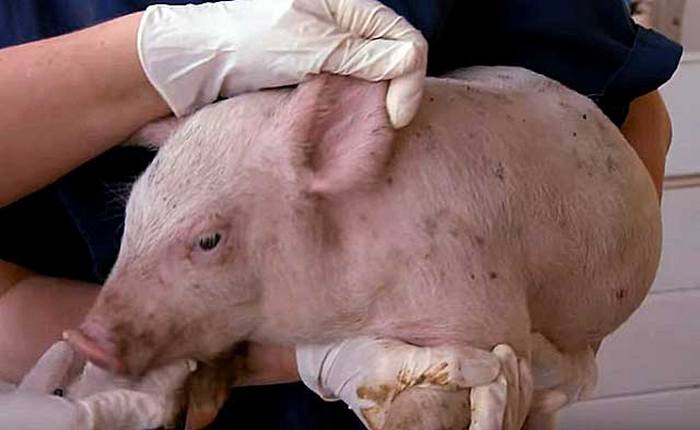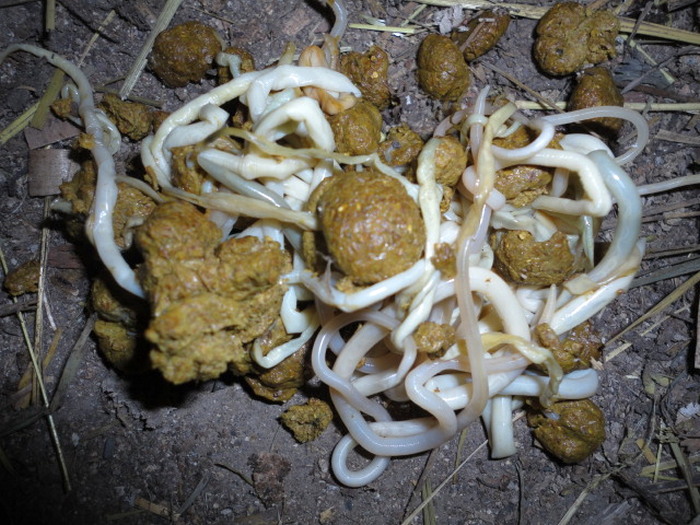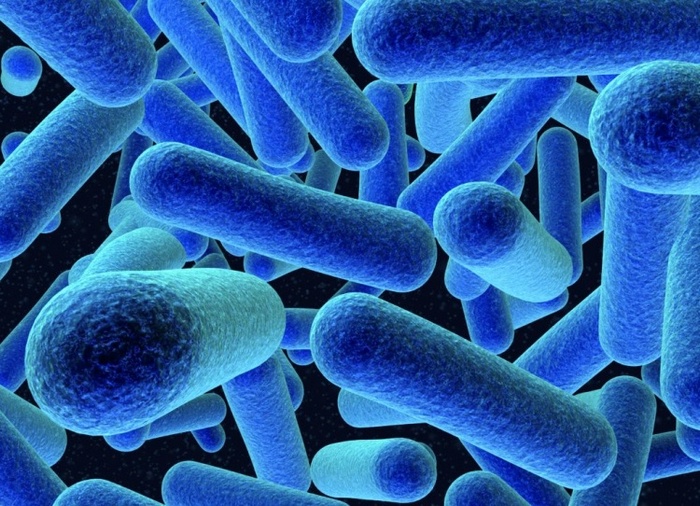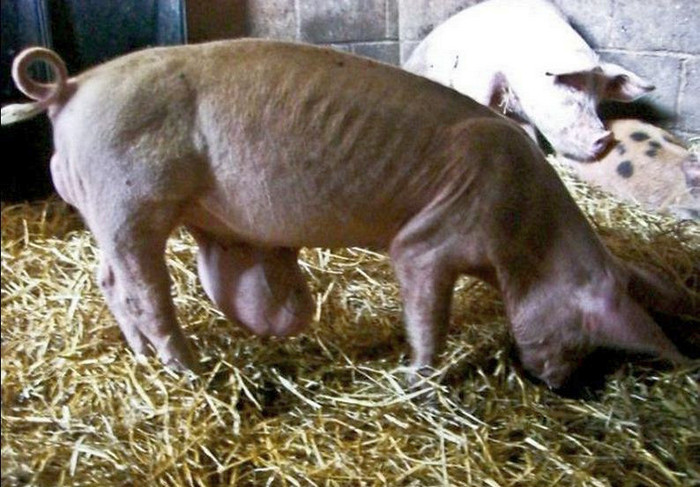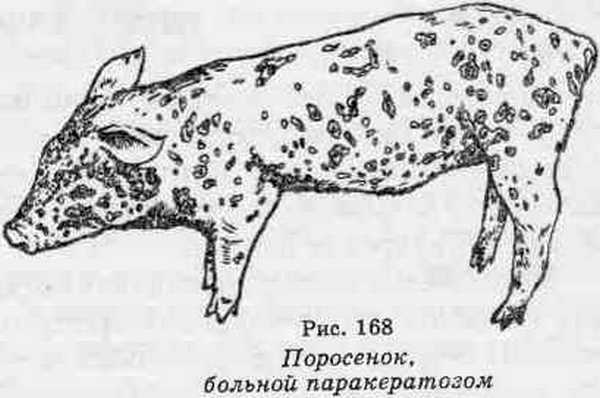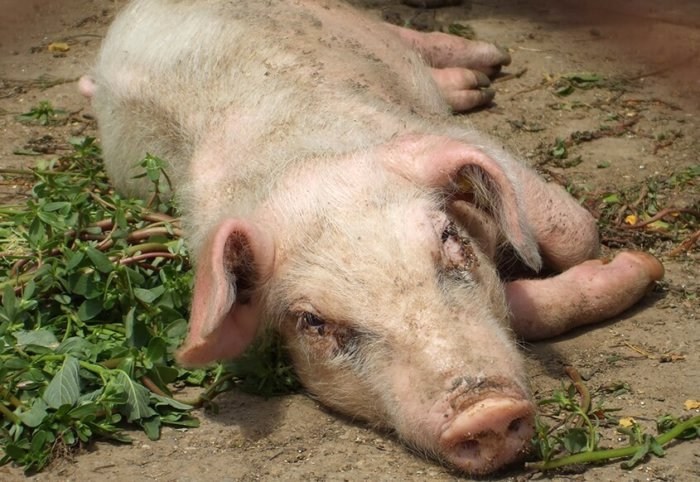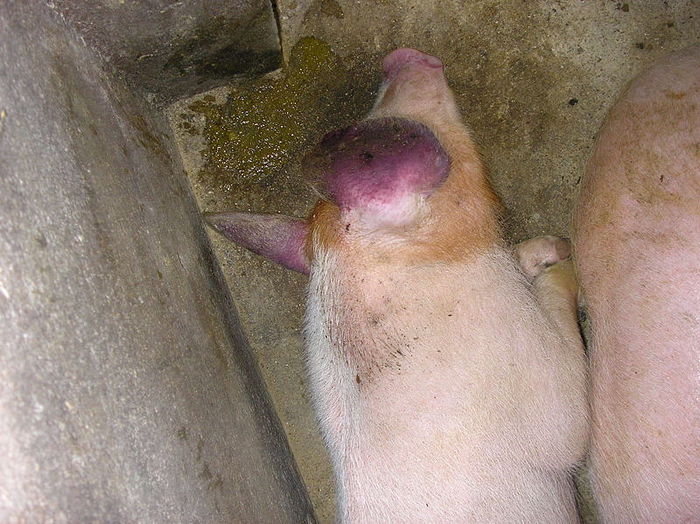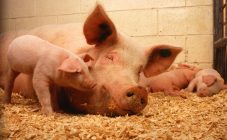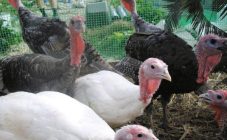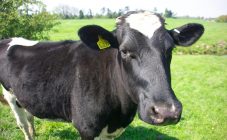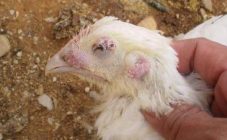Content:
In pig production, the health of the piglets plays an important role. If it is weak, adult animals will not give good results. Serious attention must be paid to the piglets to ensure timely detection and effective treatment of diseases in piglets.
About diseases
Piglet diseases are usually divided into the following types:
- Arising as a result of infection. They are often treated with antibiotics.
- Those that represent infestation with parasites.
- Non-infectious. All other diseases fall into this category. An example would be a hernia.
Worms
The disease of piglets with worms is one of the most common. Eating contaminated food is usually the source of infection. As a result, eggs of worms enter the stomach along with food. By themselves, they do not have a direct effect on the body. However, adult worms appear from them in the future.
Another possible way for the larvae to get inside is to feed on pastures that are infected, as well as to drink contaminated water.
The earliest symptom is loss of appetite, which is accompanied by a slow increase in piglet weight. At the same time, the temperature rises, and the character of the grunt changes. In this case, it becomes hoarse and uterine. The reason for the latter is that the worms inhabit the piglets' nasopharynx, influencing the sounds they make.
One of the signs of the disease may be the presence of ascaris worms in the manure. They are 4 mm long and can be easily seen. If detected, treatment should be started immediately.
Female adult worms will intensively lay eggs inside the intestines and in the nasopharynx. This leads to the fact that pigs begin to behave uneasily, rage and rush at others.
Paratyphoid
Paratyphoid disease is bacterial in nature. The cause is paratyphi suis infection. It is highly resistant to environmental influences. When exposed to air, the bacterium remains viable for at least six months.
The disease affects piglets between 2 and 6 months of age. The disease is dangerous for them - every second person can die.
Symptoms and treatment of paratyphoid fever in piglets are as follows. Bacteria end up in the intestines, where they begin to multiply, causing inflammation of the walls. As it spreads, the disease invades the lymph nodes and they become inflamed. Bacteria multiply throughout the body, affecting the walls of blood vessels. The lungs and heart are gradually affected. Sometimes the disease affects the brain tissue.
At first, the sick piglets' temperature rises to 42 degrees, often they are no longer suckers - this reflex in sick individuals weakens or disappears completely. The presence of pain forces the pigs to occupy a special position. At the same time, the pig does not eat, is lethargic, lies on its stomach, the hind limbs are pulled up under the belly, the front ones are extended. Breathing quickens, coughing occurs.
In case of paratyphoid fever, the affected mumps must be isolated from the herd. When treating, you need to pay attention to an increase in immunity. The use of antibiotics will help get rid of the disease.
Hernia
If a piglet has a hernia on its stomach, what to do depends on its type. She may be:
- inguinal;
- in the perineum;
- umbilical.
Piglets with hernia are far behind in development. They can weigh 10 kg less than healthy ones. This disease is often congenital. You can remove it promptly. If this is not done, pigs are slaughtered much earlier because they do not gain weight well.
If Vietnamese piglets are raised on the farm, their characteristics must be taken into account. When using sedimin for piglets, hemoglobin synthesis is significantly increased, and processes leading to liver dystrophy are prevented. The drug normalizes metabolic processes.
Parakeratosis
Parakeratosis is often found in piglets. It is caused by poor quality nutrition, which lacks vitamins and minerals. Animals are especially sensitive to zinc deficiency.
At the initial stage of the disease, the piglets lose their appetite and become inactive. Then red spots appear on the body. They are located on the tummy, thighs, sometimes behind the ears. As the disease progresses, the spots darken, become bluish-burgundy, developing into dermatitis, which spreads to the entire body. The disease lasts from 14 to 20 days.
One of the effective means of treatment is intramuscular injections of a 5% zinc sulfate solution with the addition of vitamin A. In this case, the spots on the belly and other parts of the body disappear on the fifth day, and the piglet will soon recover.
White muscle disease
White muscle disease is of a similar nature. The main reason for getting sick is a lack of certain amino acids in the diet. Symptoms include weakness, unsteadiness, and seizures. The disease is unpleasant for animals, but they will not die from it.
The main treatment is the introduction of vitamin E in the form of an oil solution in the diet for piglets.
Ascoridosis
If the question arises why piglets are coughing, you should immediately check them for ascoridosis. Although the first thought with such a symptom speaks of a cold, nevertheless, you need to know that ascariasis affects the lungs, and this leads to the fact that animals begin to cough and wheeze.
Hypoglycemia
Hypoglycemia is a sudden illness. It usually occurs on the first day of a newborn pig's life. It can be identified during a veterinary examination by the following features:
- The piglet lies on its tummy, constantly trembles and after a while falls to one side.
- There are visible traces of frostbite around the snout, the head is slightly thrown back, the eyes are rolled.
To treat effectively, the veterinarian must recognize the presence of the disease as early as possible. To help the animal, it is necessary to do the following. Place the piglet in a warm and dry place. It is advisable to provide the weaner with an infrared lamp.
You need to feed colostrum from the sow. Inject dextrose solution every 20 minutes until the animal is completely back to normal.
Lice
In the case when animals are constantly itching, it is safe to assume that piglets have lice. The disease often progresses when the animals are overcrowded. If a disease is detected, it is necessary to separate the sick little piglet and place it in another place. An effective treatment is the use of the drug Ivomek.
Sometimes the question arises as to why the pig's ears turn blue. This indicates an insufficient supply of blood to them. The name of the reason can be different.The most common reason is that the piglet has eaten pesticides, poisoned mushrooms, or something similar.
Why the piglet grinds its teeth, there is no single answer to this. Worms are often suggested, but there may be other causes. Here are some possible reasons:
- Teeth have grown too much.
- Imbalance in the diet.
In the latter case, additional symptoms can be observed:
- The piglet bends its back.
- He is inactive, often lying on his stomach.
The veterinarian will help determine the exact cause.
The appearance of bumps in pigs indicates the presence of furunculosis or abscess. The symptoms are very painful. Cones fester, over time they begin to turn black. Usually these diseases are treated by surgery in a veterinary clinic.
Treatment and prevention methods
When infected with worms, it is important to detect signs of the disease as early as possible. It is recommended that a sick animal be separated from the herd at the first signs of illness. Diarrhea, cardiac abnormalities are possible.
Ivermek can be used for treatment. Care must be taken when using it. How to prick Ivermek piglets, only a veterinarian can say for sure. With an insufficient concentration of the drug in the body, the therapeutic effect may be insufficient, with an excessive concentration, it can harm the piglet.
The vaccine for piglets against salmonellosis, pasteurellosis, streptococcosis and some other bacterial swine diseases contains bacteria weakened by formalin. Its use is prophylactic to combat these diseases. The drug is given mainly to piglets and sows. Immunity after application lasts for five months.
Usually, treatment methods depend on the specific disease. However, it is recommended to adhere to some rules:
- The composition of the food that piglets are fed must be balanced and contain all the basic elements (vitamins, amino acids, minerals and other substances) necessary for the body.
- It is important to keep the pigsty clean, clean and, if necessary, disinfect. Overcrowding cows can increase the risk of disease. You have to try not to have it.
- When pigs eat, it is important to ensure that they do not consume contaminated food.
- Piglets should be checked regularly. If a disease is detected, it is necessary to isolate the animal and take measures to treat it.
- You should visit your veterinarian regularly. He can examine animals and diagnose diseases.
- Some health problems may be congenital. Therefore, special attention should be paid to the control of piglets that are recently born.
- Vaccination allows you to instill immunity in animals for a certain time. But we must not forget that it acts only for a certain time. When it is over, you need to repeat the procedure. Usually vaccination is carried out in cases where there is an increased likelihood of the corresponding disease.
If there is reason to worry about the health of the piglets, you must first of all establish the correct diagnosis. The safest way is to see your veterinarian. It is important to determine the presence of the disease as early as possible. The earlier the diagnosis is made, the better the chances of successful treatment.
When engaged in pig breeding, you need to be prepared to protect piglets and adult pigs as much as possible from their inherent diseases. To do this, you need to take the necessary measures and contact your veterinarian for help if necessary.
